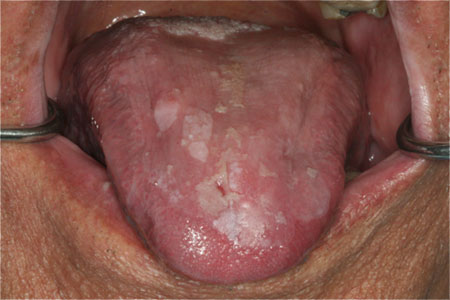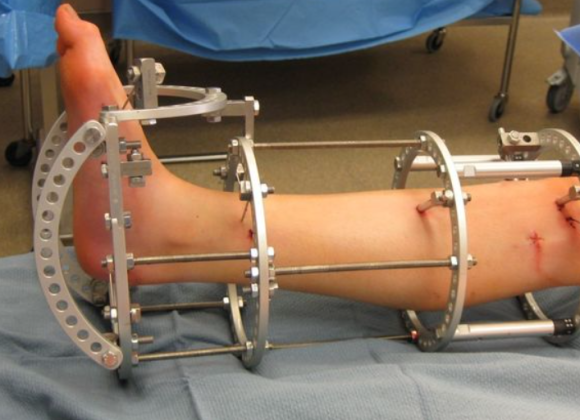Lichen planus is a chronic inflammatory condition that can affect the skin, mucous membranes, nails, and scalp. Lichen planus commonly appears as purplish, flat-topped bumps on the skin or white, lacy patches in the mouth or genital areas. It may look concerning, especially when it affects visible or sensitive parts of the body. However, it does not result from bacteria, viruses, or fungi, and it does not spread from person to person. Despite common myths, people cannot catch lichen planus through touch, sharing personal items, or sexual activity. In this article, we explore its causes, symptoms, and—most importantly—why lichen planus is not contagious.
What Is Lichen Planus?
Lichen planus is a chronic inflammatory disorder that can affect various parts of the body, including the skin, mucous membranes, nails, and scalp. It is generally considered an autoimmune condition, where the body’s immune system mistakenly attacks its own tissues. Lichen planus on the skin usually appears as purplish, flat-topped, itchy bumps. These bumps most often occur on the wrists, ankles, or lower back. When it affects the mouth, the condition is called oral lichen planus. It often causes white, lacy patches or painful sores on the inner cheeks, gums, or tongue. In some individuals, the condition can also involve the genitals, leading to redness, discomfort, or erosive lesions. When lichen planus affects the scalp, it causes a condition called lichen planopilaris, which can thin the hair or lead to permanent hair loss. It can also involve the nails, causing them to ridge, split, or even fall off entirely.
Is Lichen Planus Contagious?
Lichen planus is not contagious in any form. It is an inflammatory, autoimmune condition, not caused by bacteria, viruses, or fungi. This means people cannot spread it to others, whether it affects the skin, mouth, genitals, nails, or scalp. You cannot contract lichen planus through skin contact, sharing utensils, kissing, sexual activity, or being near someone who has it.
The disease results from an abnormal immune response. The immune system mistakenly attacks the body’s own healthy tissues. It specifically targets the skin or mucous membranes. Doctors still don’t fully understand what causes lichen planus. However, several factors may trigger the condition in some people. Certain medications can lead to lichen planus. Some dental materials may also act as triggers. Emotional or physical stress can contribute to flare-ups. In some cases, chronic infections like hepatitis C are linked to its development. However, none of these factors make the condition infectious.
Despite its sometimes alarming appearance—such as red, purple, or white lesions and sores—lichen planus is not a threat to others. The belief that it might be contagious often stems from its similarity to infectious skin diseases or sexually transmitted infections, especially in cases involving the mouth or genitals. Dispelling this myth is essential to reduce unnecessary fear, social stigma, and isolation that some patients may experience.
What Causes Lichen Planus?
Researchers have not fully understood the exact cause of lichen planus, but they believe a malfunction in the immune system plays a key role. In this condition, the body’s immune cells mistakenly attack healthy skin or mucosal tissues, leading to inflammation and the characteristic lesions. A variety of factors may trigger this autoimmune reaction. In some cases, certain medications—such as those that treat high blood pressure, heart disease, or arthritis—trigger a lichenoid drug reaction that resembles lichen planus. Viral infections, especially hepatitis C, also contribute to the development of lichen planus in some individuals. Allergic reactions to dental materials like amalgam fillings, or contact with certain chemicals, may contribute in cases of oral lichen planus. Researchers believe that genetic predisposition and chronic stress can trigger or worsen the condition, although these factors alone usually don’t cause it. In many cases, doctors cannot identify a clear cause and classify the condition as idiopathic. While it is not contagious or caused by poor hygiene, understanding possible triggers can help in managing and preventing flare-ups.
Why the Confusion About Contagion?
Lichen planus is often mistaken for a contagious condition because of how it looks and where it appears. The rash can show up as red or purple bumps on the skin, or as painful sores in the mouth or genital area—similar to viral or fungal infections that are contagious. This visual similarity can easily lead people to believe it spreads through touch or close contact. Lichen planus adds to the confusion by lasting a long time, returning over time, and affecting multiple areas of the body, which can make it seem like it’s “spreading.” In reality, lichen planus is an autoimmune condition, not an infection. It cannot be passed from person to person, even through skin contact, sharing food, or sexual activity. Greater public understanding of these facts can help reduce unnecessary fear and stigma around the condition.
Key Facts to Remember
Lichen planus is a non-contagious, autoimmune condition that affects the skin, mucous membranes, nails, and scalp. It is not caused by bacteria, viruses, or fungi, and it cannot be spread through touch, sharing personal items, or sexual contact. Although its symptoms—such as rashes, sores, or discoloration—can look similar to infectious conditions, lichen planus is entirely different in nature.
The exact cause is still unclear, but the condition is believed to be triggered by an abnormal immune response, and in some cases, it may be linked to medications, hepatitis C infection, or stress. It is not related to poor hygiene or lifestyle choices. While lichen planus can be persistent or uncomfortable, it is not life-threatening and can often be managed with medical treatment and lifestyle adjustments.
Understanding these facts helps reduce unnecessary worry and stigma, and encourages those affected to seek proper diagnosis and care without fear of spreading the condition to others.
Final Thoughts
Lichen planus may appear alarming due to its symptoms and the areas it affects, but it’s important to remember that it is a non-contagious, immune-related condition. Although researchers don’t always know the exact cause, doctors can greatly improve a patient’s quality of life through proper diagnosis and management. Educating the public and correcting common myths—especially the false belief that lichen planus spreads from person to person—helps reduce stigma and encourages people to seek timely medical care. If you or someone you know is experiencing symptoms of lichen planus, consulting a healthcare provider is the best step toward understanding the condition and finding effective treatment options.




